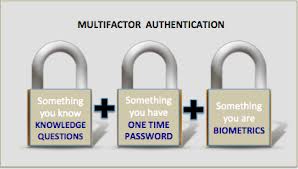According to a new market research report “Multi-Factor Authentication Market by Model/Type (Two, Three, Four & Five-Factor), Application (Banking & Finance, Government, Defense, Healthcare and others), & by Geography – Global Trend & Forecast to 2014 – 2020”, published by MarketsandMarkets, the total market is expected to reach $10.75 Billion by 2020, at a CAGR of 19.67%.
Multi-factor authentication (MFA) implies user and employee authentication by verifying two or more authentication techniques (Hardware token, One Time Password, Password/PIN, and Biometric traits) provided by him/her. MFA has become the most important part of security due to increase in unauthorized access, frauds, border intrusion, and so on. MFA is increasingly getting deployed at all the security checkpoints in airports, commercial complex, retail malls, banking & finance, and so on. MFA provides accurate authentication and negligible margin of duplicity or error.
This report describes the various types of biometric and non-biometric technologies such as hardware and software tokens, OTP (One Time Password), and biometric recognition that are being used for different applications. The above-mentioned techniques can be combined to form two, three, four, and five-factor authentication models. Out of these models, two-factor authentication is commonly used in most of the applications. Two-factor authentication is the oldest type of MFA technique and can be seen at banks, ATMs, and at various government offices.
The report also throws light on the various application areas of MFA technology such as government, banking and finance, travel and immigration, defense, consumer electronics, commercial security, and healthcare. MFA technology is slowly spreading across all the industries wherever security is the prime concern. MFA is largely deployed in the application areas like government, travel and immigration, banking & finance, and defense.
Two-factor authentication model covers almost 90% of the market for multi-factor authentication, wherein banking & finance, travel & immigration, commercial security are the major applications. Three, four, and five-factor authentication models are less used when compared to two-factor authentication. The three-factor authentications include smart card with pin and biometric technology, smart card with two biometric technologies, pin with two biometric technologies and three biometric authentications. On the other hand, four- and five-factor authentication includes the use of smart card and pin with more than one type of biometric technology such as face recognition, fingerprint recognition, voice recognition, and so on. Three-factor authentication is mostly used in private access areas like bank lockers, secret data access, defense, travel & immigration. The use of four- and five-factor authentication models is restricted to high cost projects in defense, research, and government-based applications.
Global Multi-Factor Authentication Market is expected to reach $10.75 Billion by 2020, at an estimated CAGR of 19.67%. North America is the biggest multi-factor authentication market; followed by Europe and APAC. In ROW, the Middle East and Africa are the largest contributor’s way and at every level.


